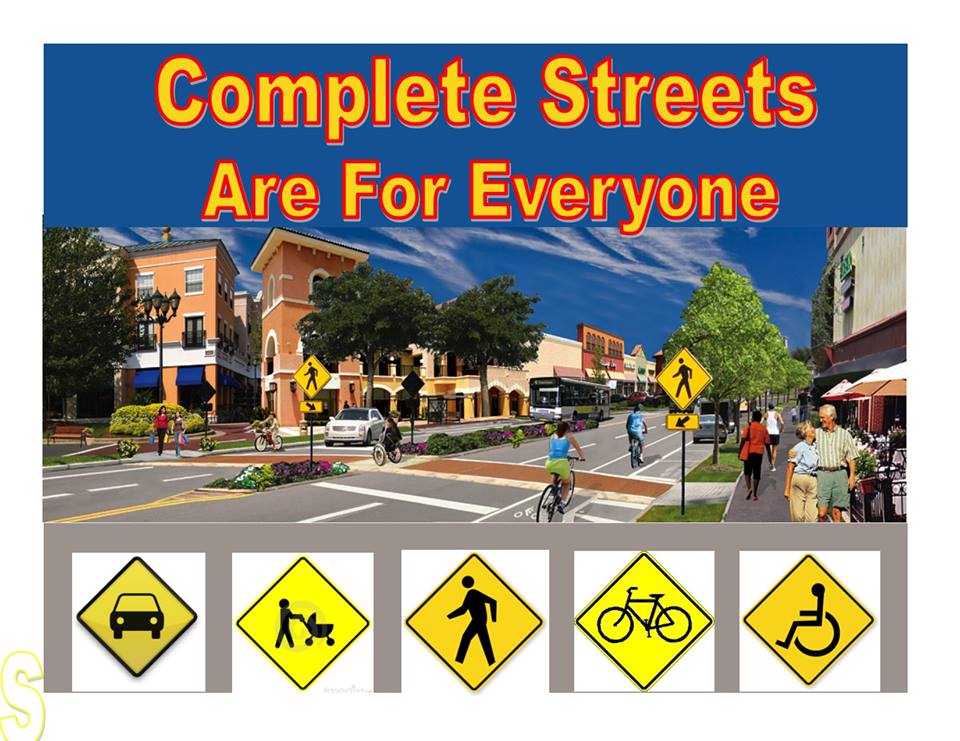Thrive has requested that the city of Iola enact a Complete Streets ordinance. The Iola City Council will consider the request at their February 8 meeting at 6pm at the Riverside Park community building. Here’s what a Complete Streets ordinance is and why it’s important to the health of the Iola community.

Over the last few years, the City of Iola has done an outstanding job making street improvements for the benefit of motorists, pedestrians, and bicyclists. These improvements include adding new sidewalks as part of the Cottonwood Street reconstruction; the installation of the HAWK traffic signal at the intersection of State Street and the Prairie Spirit Trail; installation of pedestrian crossing signs downtown and at pathways to elementary schools; and the construction of the State Street sidewalk, which was recognized in November with Thrive’s 2015 Award for Excellence in Health.
The practice of designing a community’s built environment so that it is safe and convenient for all types of travelers is known as “Complete Streets”.
Complete Streets provide appropriate accommodations for pedestrians, bicyclists, and persons of all abilities (such as people using wheelchairs, mobility devices, and the sight-impaired) while promoting safe operation on the roadway for ALL users.
Communities that follow the Complete Streets precepts not only provide opportunities for their residents to get around safely, but encourage people to make healthy choices in their day-to-day transportation decisions. The community also realizes significant financial savings by doing things right the first time, rather than implementing necessary infrastructure as expensive “improvements”.
The State Street sidewalk is an excellent example of this. It would have been dramatically less expensive and more efficient for sidewalks to have been constructed when State Street was expanded from 2 lanes to 5 lanes in 1994. The contractors were mobilized and concrete was being poured anyway. The sidewalk would have been a minor addition to a massive project, instead of a major secondary expense.



